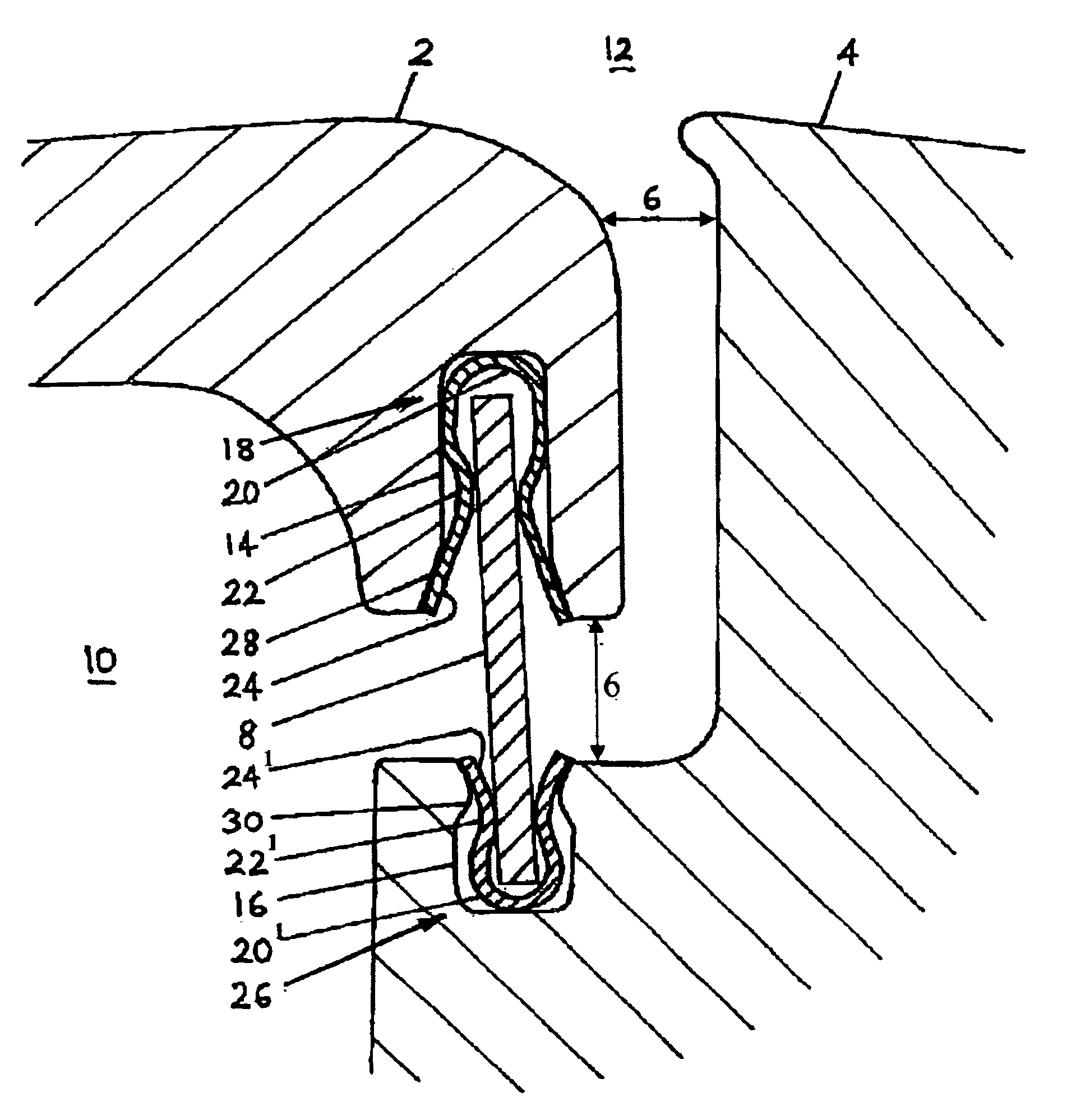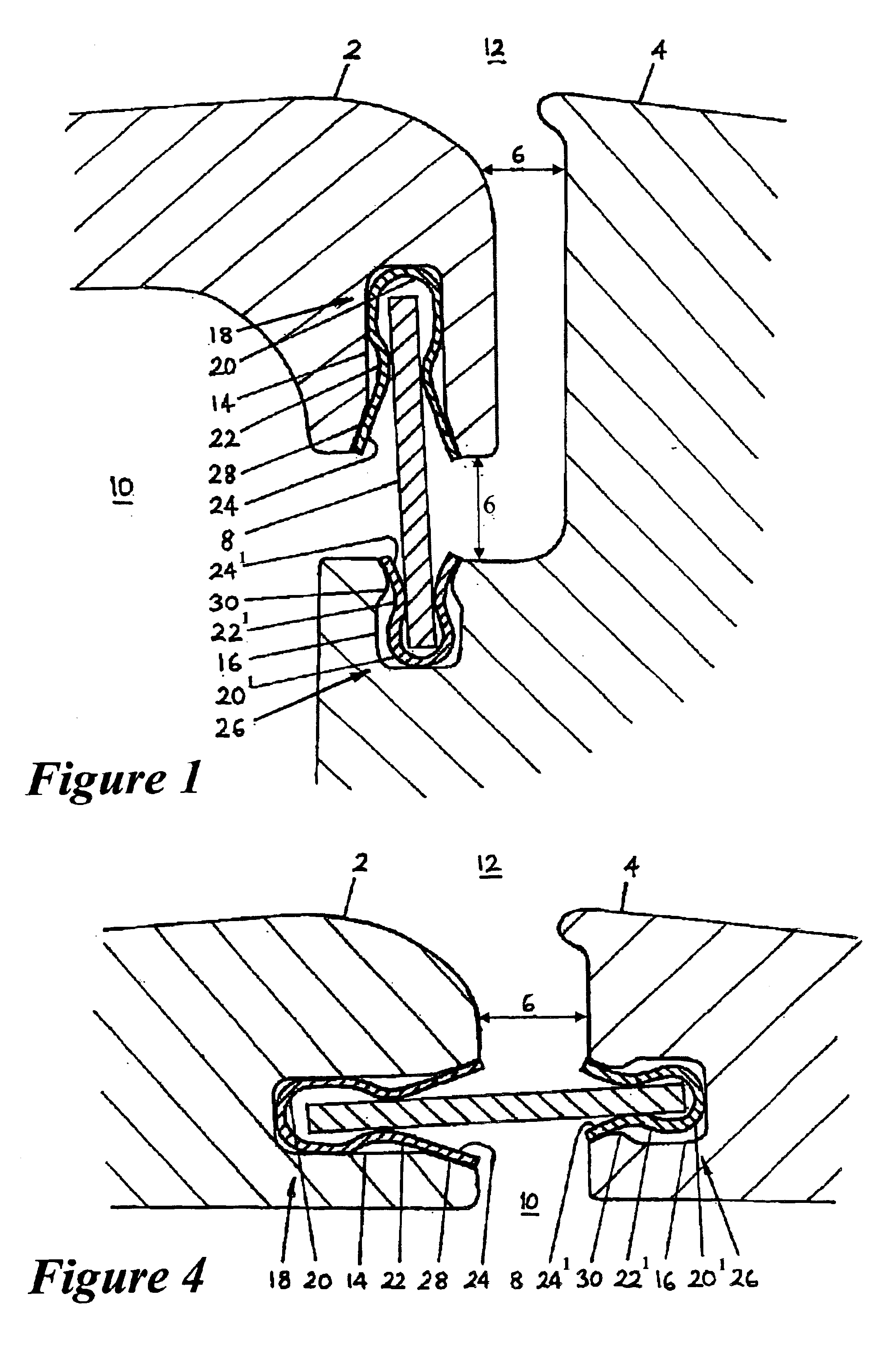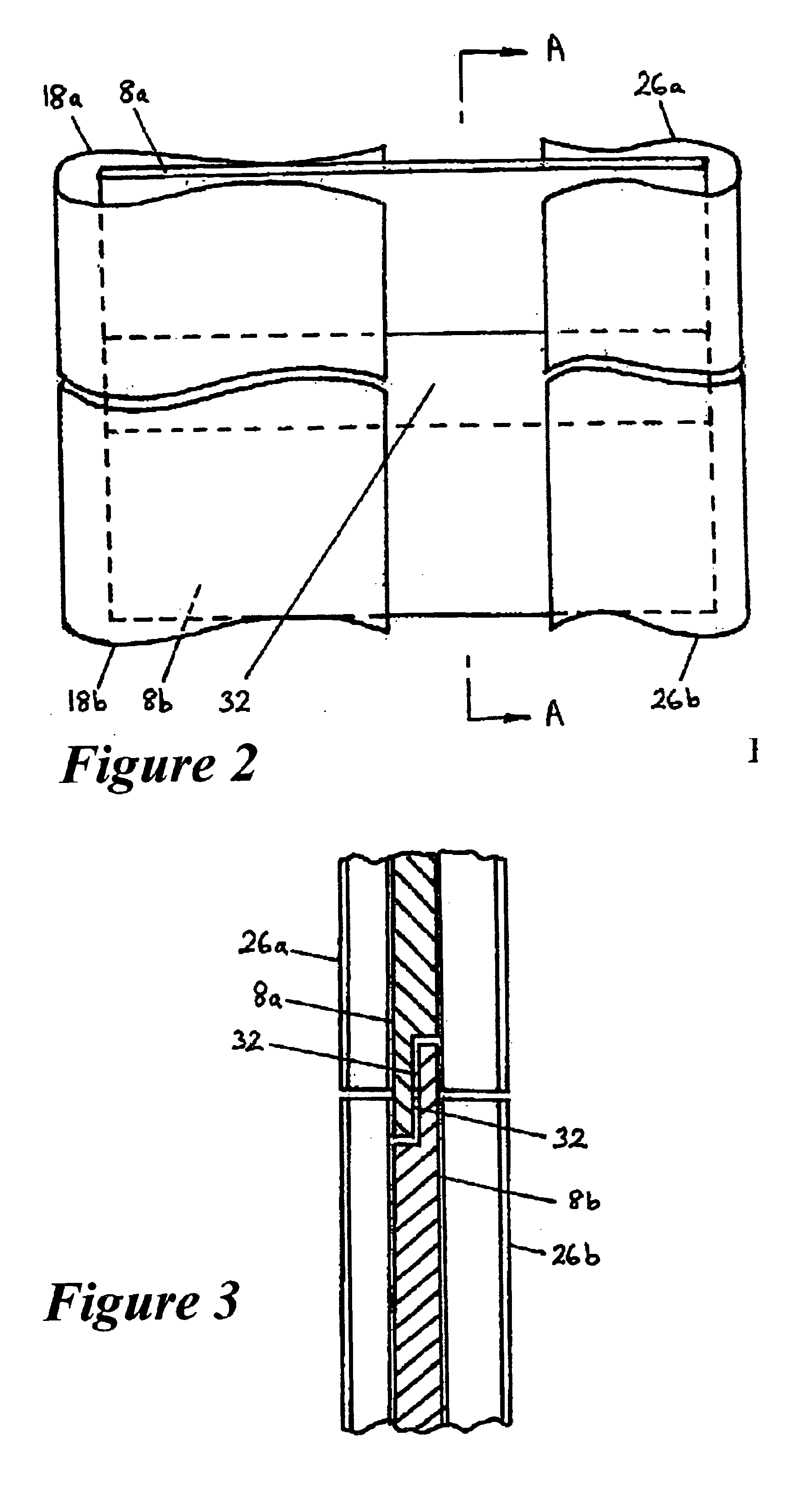Sealing arrangements
- Summary
- Abstract
- Description
- Claims
- Application Information
AI Technical Summary
Benefits of technology
Problems solved by technology
Method used
Image
Examples
Embodiment Construction
[0036]FIG. 1 illustrates in cross section the junction or joint between a first part 2 and a second part 4 of a housing of a gas turbine. The housing is generally cylindrical about an axis of the turbine (not shown) running horizontally below the lower edge of FIG. 1. A narrow gap 6 between the first and second parts of the housing 2,4 is bridged by a seal plate 8 to separate the interior 10 of the housing from the exterior 12. The seal plate 8 is a flat ring concentric with the axis of the housing and must be sufficiently rigid to withstand the pressure difference between the housing's interior 10 and its exterior 12 without excessive deformation. The outer edge of the seal plate 8 is received in an inwardly facing annular recess 14 of the first part 2 of the housing. An outwardly facing recess 16 in the second part 4 of the housing confronts the recess 14 across the gap 6 and receives the inner edge of the seal plate 8.
[0037]Located in the first annular recess 14 and interposed be...
PUM
 Login to View More
Login to View More Abstract
Description
Claims
Application Information
 Login to View More
Login to View More - R&D
- Intellectual Property
- Life Sciences
- Materials
- Tech Scout
- Unparalleled Data Quality
- Higher Quality Content
- 60% Fewer Hallucinations
Browse by: Latest US Patents, China's latest patents, Technical Efficacy Thesaurus, Application Domain, Technology Topic, Popular Technical Reports.
© 2025 PatSnap. All rights reserved.Legal|Privacy policy|Modern Slavery Act Transparency Statement|Sitemap|About US| Contact US: help@patsnap.com



